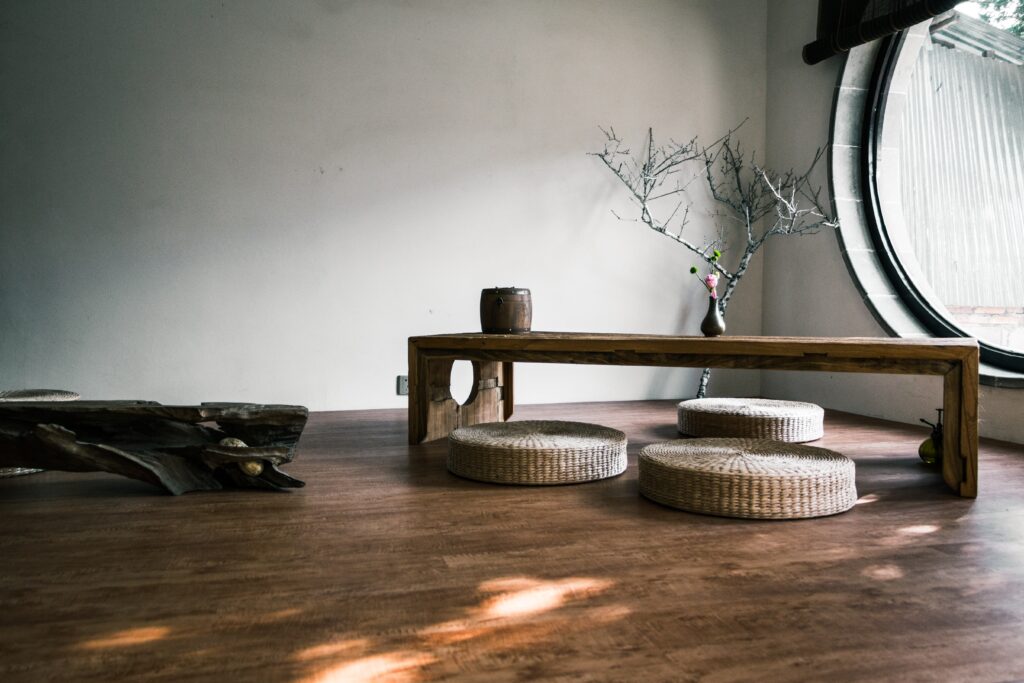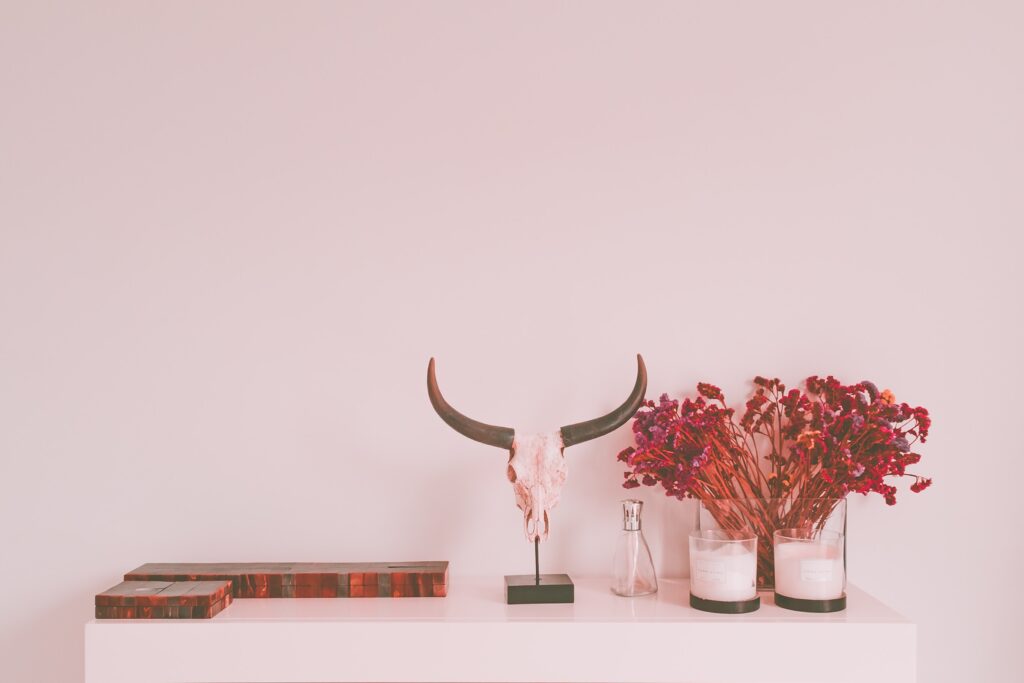In a world that often feels chaotic and overwhelming, finding peace and tranquility at home is essential. One way to achieve this is by adopting a simplistic décor style that embraces minimalism. Simplistic décor, also known as minimalist or minimalistic décor, is a design philosophy that focuses on simplicity, clean lines, and uncluttered spaces.
In this article, we will explore the concept of simplistic décor, its benefits, and how to implement it in your home.
1. What is Simplistic Décor?
Simplistic décor is an interior design style that celebrates the beauty of simplicity. It emphasizes clean lines, functional spaces, and a clutter-free environment. This design approach embraces the philosophy of “less is more” and promotes a sense of calm and serenity. Simplistic décor creates a harmonious balance between form and function, allowing the space to breathe and the mind to relax.
2. Benefits of Simplistic Décor
Adopting a simplistic décor style in your home can bring numerous benefits. Firstly, it helps to reduce visual clutter, creating a sense of spaciousness and openness. This can make even smaller rooms appear larger and more inviting. Secondly, simplistic décor promotes better organization and tidiness, making it easier to maintain a clean and well-kept home. Additionally, this style encourages mindfulness and a focus on essential elements, fostering a sense of clarity and peace of mind.

3. Key Elements of Simplistic Décor
To achieve a simplistic décor, certain key elements should be considered. Clean lines and minimal ornamentation are essential. Choose furniture and accessories with simple and streamlined designs. Opt for neutral color palettes such as whites, grays, and earth tones to create a serene atmosphere. Open spaces, uncluttered surfaces, and ample natural light also play crucial roles in simplistic décor.
4. Choosing Colors for Simplistic Décor
Colors have a significant impact on the overall ambiance of a space. When it comes to simplistic décor, it’s best to stick to neutral colors to create a calm and cohesive environment. Shades of white, beige, and light gray work well as base colors. You can add subtle pops of color through artwork, textiles, or small decorative items, but remember to keep it minimal to maintain the simplistic aesthetic.
5. Minimalist Furniture and Accessories
In simplistic décor, furniture and accessories should be chosen with care. Choose items with sleek contours and minimalistic aesthetics. Minimalist furniture often features sleek materials like metal, glass, or wood with a natural finish. Avoid excessive ornamentation or intricate details. When it comes to accessories, select a few carefully curated items that complement the overall style and enhance the visual appeal of the space.
6. Creating an Open and Airy Space
Openness and airiness are fundamental principles of simplistic décor. Arrange furniture in a way that allows for easy movement and flow. Avoid overcrowding the space with unnecessary items. Use open shelving or storage solutions to keep things organized while maintaining a sense of spaciousness. Strategic placement of mirrors can also create an illusion of larger space and reflect natural light.
7. Incorporating Natural Elements
Bringing nature indoors is a key aspect of simplistic décor. Natural elements such as plants, wood, and stone can add warmth, texture, and a sense of tranquility to your space. Consider adding indoor plants that require minimal maintenance, such as succulents or snake plants. Incorporate wooden furniture or accents to bring a touch of nature indoors. Natural materials create a harmonious connection between the interior and the outside world.
8. Lighting for Simplistic Décor
Lighting plays a crucial role in creating the right ambiance for simplistic décor. Natural light is the best option, so make the most of windows and skylights. Opt for sheer curtains or blinds that strike a balance between allowing natural light to filter through and ensuring privacy. When it comes to artificial lighting, choose fixtures with clean, minimalist designs. Soft and warm lighting can create a cozy atmosphere, while adjustable task lighting provides functionality and flexibility.
9. Mixing and Matching Materials
In simplistic décor, the combination of different materials adds visual interest and depth. However, it’s important to strike a balance and maintain a cohesive look. Choose materials that complement each other, such as pairing wood with metal or glass. For example, a wooden dining table can be paired with sleek metal chairs. The juxtaposition of materials adds a touch of uniqueness without overwhelming the overall simplicity.

10. Tips for Maintaining a Clutter-Free Space
To maintain the simplicity and serenity of a minimalist space, it’s crucial to keep clutter at bay. Here are a few tips to help you achieve and maintain a clutter-free environment:
- Regularly declutter and remove items that are no longer needed.
- Adopt an organized storage system to keep things in order.
- Prioritize quality over quantity when it comes to furniture and accessories.
- Develop a habit of putting things back in their designated places.
- Embrace a minimalist lifestyle and avoid unnecessary purchases.
11. Simplistic Décor for Different Rooms
Simplistic décor can be applied to various rooms in your home, creating a cohesive design throughout. Whether it’s the living room, bedroom, kitchen, or bathroom, the principles of simplistic décor can be adapted to suit each space. The key is to maintain a sense of harmony and simplicity while considering the specific functionality and requirements of each room.
12. How to Achieve Simplistic Décor on a Budget
You don’t need to break the bank to achieve a simplistic décor style. Here are some budget-friendly tips to help you create a minimalist haven:
- Repurpose and upcycle existing furniture or accessories.
- Shop at thrift stores or online marketplaces for affordable yet stylish pieces.
- Engaging in do-it-yourself (DIY) endeavors allows for the infusion of a personalized essence into projects, all the while providing a cost-effective alternative.
- Focus on decluttering and removing unnecessary items instead of buying new ones.
- Prioritize essential elements and invest in high-quality pieces that will stand the test of time.
13. Common Mistakes to Avoid
While embracing simplistic décor, it’s important to be aware of common pitfalls. Avoid these mistakes to maintain the integrity of your minimalist space:
- Over-decorating or cluttering the space with unnecessary items.
- Sacrificing comfort for aesthetics.
- Neglecting functionality and practicality.
- Allowing surfaces to become magnets for clutter.
- Ignoring personal touches and individuality.

Conclusion
In a fast-paced world, simplistic décor provides a much-needed respite. By embracing minimalism and focusing on essential elements, you can create a harmonious and serene environment in your home. From choosing the right colors and furniture to incorporating natural elements and maintaining a clutter-free space, each decision contributes to the overall aesthetic and ambiance. Embrace simplicity, and let your home be a sanctuary of calm and tranquility.
FAQs
Q1: Is simplistic décor suitable for small spaces?
A1: Absolutely! Simplistic décor can work wonders in small spaces, as it creates a sense of openness and airiness.
Q2: Can I add personal touches to a simplistic décor style?
A2: Yes, personal touches are encouraged! While keeping it minimal, add items that hold sentimental value or reflect your personality.
Q3: Is simplistic décor only for modern homes?
A3: No, simplistic décor can be adapted to different styles, from modern to rustic or Scandinavian. It’s about embracing simplicity and minimalism.
Q4: How can I make a room feel cozy with simplistic décor?
A4: Use warm lighting, soft textiles, and natural materials to create a cozy ambiance within the simplistic décor framework.
Q5: What are some popular color palettes for simplistic décor?
A5: Neutral colors such as whites, grays, and earth tones are commonly used in simplistic décor, but you can add subtle pops of color if desired.
